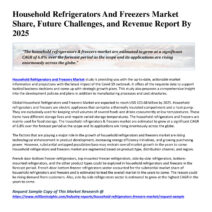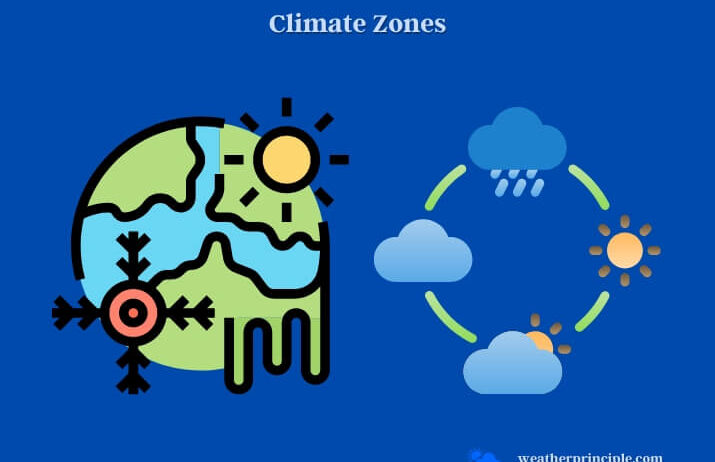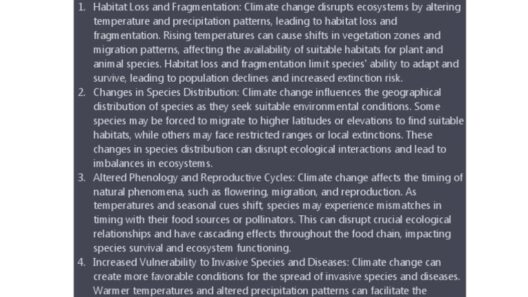Understanding climate zones is essential for grasping the intricacies of the Earth’s weather patterns and environmental dynamics. These zones represent localized areas with distinct climatic characteristics influenced by various natural factors, including latitude, altitude, geography, and oceanic currents. By studying climate zones, we can better adapt to our environment, anticipate changes, and implement sustainable practices.
Climate zones serve as a framework for scientists, researchers, and policymakers to categorize the world’s diverse climates. This categorization facilitates comprehensive research into how climate impacts ecosystems, helps predict weather patterns, and informs agricultural practices. In this exploration, we will delve into the different types of climate zones, the factors influencing them, and their significance in environmental science.
The study of climate zones can be broadly divided into several categories defined by their temperature and precipitation patterns. Understanding these categories lays the foundation for recognizing how they affect both human life and the natural world.
The most renowned classification system, developed by climate scientist Vladimir Köppen, outlines five major climate types: tropical, dry, temperate, continental, and polar. Each of these major types is further divided into subtypes based on variations in temperature and precipitation.
In tropical climate zones, characterized by high temperatures year-round and significant rainfall, flora and fauna thrive. This region promotes biodiversity, showcasing lush rainforests and extensive wetlands such as the Amazon and Congo basins. In contrast, the dry climate encompasses arid and semi-arid areas where precipitation is minimal, leading to deserts like the Sahara. The adaptation of life in these regions is extraordinary, as plants and animals have evolved to survive harsh conditions.
The temperate climate zone, which can be found in various regions across the globe, including parts of Europe and North America, is distinguished by moderate weather with distinct seasonal changes. This variability fosters agricultural diversity; the reliable seasons promote an array of crops throughout the year. Furthermore, it presents unique ecosystems, from temperate rainforests to deciduous forests, all showcasing an amazing array of biodiversity.
Continental climates occur in the interiors of large landmasses, experiencing more extreme temperature variations. These regions often see cold winters and scorching summers, which can be challenging for living organisms. Sustainable practices and adapting agricultural methods are paramount for maintaining productivity in these climates.
Finally, the polar climates represent the coldest climates on Earth, where temperatures remain low year-round. This zone is essential for studying global climate change, as polar regions are highly sensitive to temperature fluctuations and exhibit significant melting of ice caps. Understanding these impacts is crucial in assessing global sea level rise and other consequences of climate change.
Various factors shape climate zones beyond just their geographical locations. Latitude plays a critical role in determining the amount of solar radiation an area receives. Regions closer to the equator receive more direct sunlight year-round, resulting in warmer temperatures, whereas polar regions receive less sunlight, leading to colder climates.
Altitude is another influential factor; as elevation increases, temperatures generally decrease. This phenomenon creates vertical climate zones, where different ecosystems can exist in proximity to one another. For instance, tropical mountains may host alpine ecosystems, contributing to high biodiversity. Understanding these interactions is essential for conservation efforts, as habitats can be delicate and susceptible to climate change.
Geography also influences climate zones through the presence of mountains, oceans, and other geographical features. The rain shadow effect, for example, occurs when moisture-laden winds encounter mountain ranges, causing precipitation to fall on one side while the opposite side remains arid. This leads to diverse ecosystems in a relatively small area and highlights the interplay between topography and climate.
Oceanic currents further complicate climate dynamics. Warm currents can raise temperatures along coastal areas, while cold currents can have a cooling effect. Understanding these factors is vital as they can modify the local climate, influence weather patterns, and support diverse marine ecosystems.
Mapping climate zones is more than just ecological categorization; it plays an integral role in deciphering global environmental challenges. With climate change at the forefront of global discourse, knowing how climate zones interact with human activities is crucial. From agriculture and forestry to urban planning and disaster management, the implications of climate zone knowledge are far-reaching and essential for sustainability.
Climate zones also inform biodiversity conservation strategies. By identifying habitats that are sensitive to climate fluctuations, conservationists can implement targeted measures to safeguard vulnerable species. In addition, understanding the distribution of climate change impacts allows for the development of resilient agricultural practices, further supporting food security.
Education and awareness about climate zones can empower individuals and communities. Recognizing how local climates affect daily life encourages sustainable practices that promote environmental stewardship. Small changes, such as planting native species or conserving water, can have a significant impact on local ecosystems and mitigate adverse climatic effects.
In conclusion, climate zones are an essential tool for understanding the dynamic processes shaping our planet. By mapping these zones and recognizing the factors that influence them, we deepen our knowledge of environmental science, enhance our ability to adapt to changes, and strive towards sustainable practices. As we face challenges of climate change, understanding climate zones will remain crucial in fostering a more resilient and cohesive approach to environmental stewardship.






